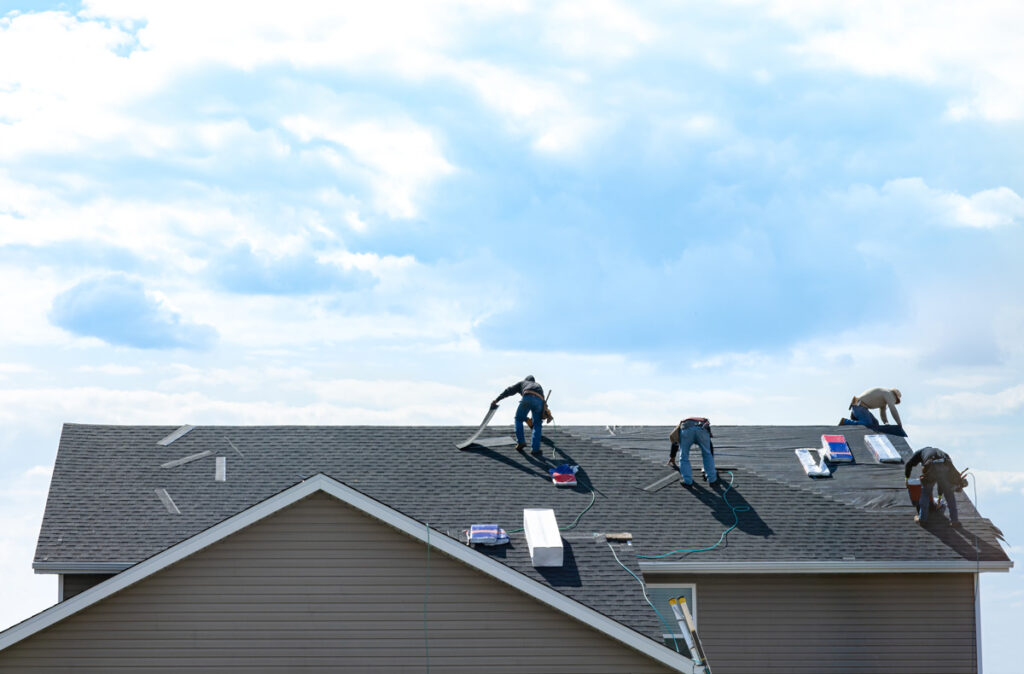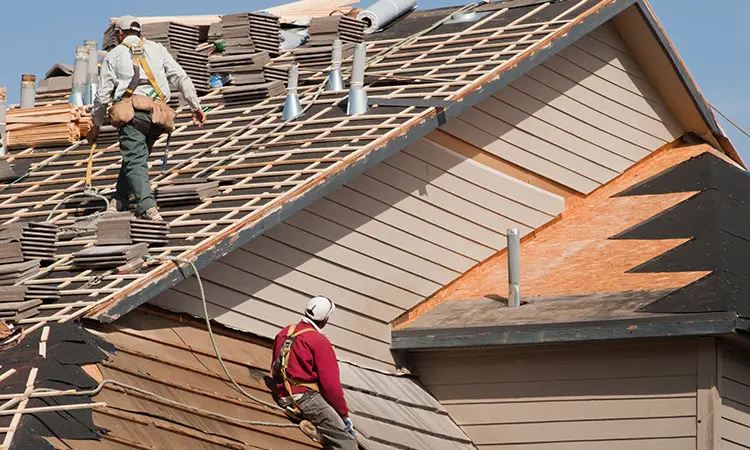Roofing Oahu: Professional Roofer for Your Oahu Residential property
Roofing Oahu: Professional Roofer for Your Oahu Residential property
Blog Article
Recognizing the Various Kinds Of Roof Coverings: A Comprehensive Guide for Homeowners
With a variety of choices-- varying from the traditional gable to the modern flat-- each kind provides special advantages and challenges that ought to align with the homeowner's ecological factors to consider and particular demands. As we explore the intricacies of numerous roof kinds, it ends up being noticeable that one size does not fit all; the right option may stun you.
Saddleback Roof
Gable roofs, defined by their triangular shape, are among the most preferred roof styles due to their simpleness and efficiency in losing water and snow. This design features 2 sloping sides that meet at a ridge, enabling for effective drainage and decreasing the threat of water buildup. The high pitch typically related to saddleback roofs boosts their ability to take care of heavy precipitation, making them ideal for various environments.
In enhancement to their sensible benefits, saddleback roofs offer aesthetic convenience. They can be adapted to numerous architectural designs, from traditional to contemporary homes. The style can additionally suit added attributes such as dormer home windows, which improve all-natural light and air flow in the attic area.
Additionally, saddleback roofs provide ample space for insulation, contributing to energy effectiveness. Homeowners can choose from a variety of roofing products, consisting of asphalt roof shingles, steel, and ceramic tiles, even more enhancing customization choices.
Despite their advantages, saddleback roofs might call for additional support in areas prone to high winds or heavy snowfall. On the whole, the gable roof stays a preferred selection because of its mix of functionality, toughness, and visual allure.
Flat Roofs
Level roofing systems are usually identified for their minimal design and sensible applications, particularly in commercial and commercial setups (oahu roofing). These roofs include a nearly straight or straight surface, which enables for simple building and construction and flexible space utilization. While they might lack the aesthetic appeal of pitched roofings, flat roofings supply various benefits, especially in metropolitan environments where optimizing space is critical
One of the main benefits of level roofings is their ease of access. Home owners can utilize the roof covering area for numerous purposes, such as rooftop gardens, terraces, or photovoltaic panel setups. Furthermore, level roof coverings are normally more cost-efficient to preserve and set up compared to their sloped counterparts, as they need fewer products and labor.
Nonetheless, flat roofs do existing certain obstacles. Correct drain is important to prevent water merging, which can bring about leaks and structural damages. Thus, selecting high-quality waterproofing materials and regular assessments are crucial for making sure longevity. Typical products made use of for flat roofing systems consist of built-up roofing (BUR), customized asphalt, and single-ply membranes, each offering unique advantages. Generally, flat roofing systems serve as a versatile and useful option for many property owners and companies alike.
Hip Roofings
Hip roofing systems are identified by their sloped sides that assemble on top, forming a ridge. This layout stands out from gable roofs, as all 4 sides of a hip roofing incline downwards towards the wall surfaces, providing a more steady framework. The angle of the inclines can vary, permitting flexibility in building aesthetics and functionality.
Among the key advantages of hip roofing systems is their capability to stand up to hefty winds and adverse weather problems. The sloped surfaces make it possible for far better water drainage, lowering the danger of leaks and water damage. Furthermore, hip roofings offer boosted attic room space, which can be used for storage and even exchanged habitable areas.
However, constructing a hip roofing can be much more intricate and costly than less complex roofing system types, such as gable roofing systems. The added product and labor involved in creating the inclines and making sure correct architectural integrity can cause greater costs. In spite of these downsides, several property owners prefer hip roofing systems for their sturdiness, aesthetic allure, and potential for energy effectiveness.
Mansard Roof Coverings
Mansard roofs, commonly acknowledged by their one-of-a-kind four-sided layout, attribute two slopes on each side, with the reduced slope being steeper than the top. This building style, stemming from France in the 17th century, is not only visually appealing but functional, as it makes best use of the useful area in the top floors of a structure. The high lower slope allows for more clearance, making it an optimal option for attic rooms or lofts, which can be exchanged living areas.
Mansard roofings are defined by their adaptability, suiting numerous building designs, from traditional to modern. official website They can be constructed with different materials, including asphalt tiles, slate, or steel, offering homeowners with a series of alternatives to fit their preferences and budgets. Additionally, the style enables the assimilation of dormer home windows, enhancing all-natural light and official source ventilation in the top degrees.
Nevertheless, it is crucial to consider the possible drawbacks. Mansard roof coverings may call for even more maintenance due to the intricacy of their design, and their steep slopes can be testing for snow and rainfall runoff. In general, mansard roof coverings combine style with practicality, making them a prominent selection among property owners seeking unique architectural attributes.
Dropped Roofing Systems
As home owners increasingly look for simplicity and capability in their architectural layouts, dropped roofings have actually emerged as a preferred selection. Characterized by a solitary sloping plane, a shed roofing provides a minimal visual that complements numerous home designs, from modern to rustic.
Among the main advantages of a shed roofing system is its uncomplicated construction, which commonly equates to reduce labor and product costs. This style enables effective water drainage, lowering the risk of leakages and water damages. Furthermore, the vertical incline provides adequate space for skylights, enhancing all-natural light within the interior.
Dropped roof coverings additionally provide flexibility in terms of usage. They can be efficiently incorporated right into additions, garages, or outdoor frameworks like pavilions and sheds. Additionally, this roofing system style can suit different roof covering materials, including metal, asphalt shingles, or perhaps green roofings, straightening with environmentally friendly initiatives.
Nevertheless, it is necessary to consider regional environment problems, as hefty snow lots may require modifications to the roofing system's angle or structure. Overall, lost roofs present a sensible and visually pleasing alternative for house owners aiming to make best use of functionality without jeopardizing design.
Conclusion


Gable roof coverings, identified by their triangular form, are among the most preferred roof styles due to their simplicity and effectiveness in dropping water and snow. oahu roofing. The steep pitch typically connected with gable roofing systems enhances their capacity to take care of hefty precipitation, making them suitable for various climates
While they may do not have the visual charm of pitched roofing systems, flat roofing systems use various benefits, especially in city settings where optimizing space is critical.

Report this page